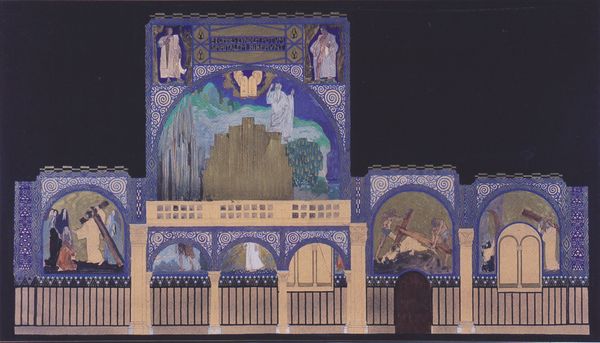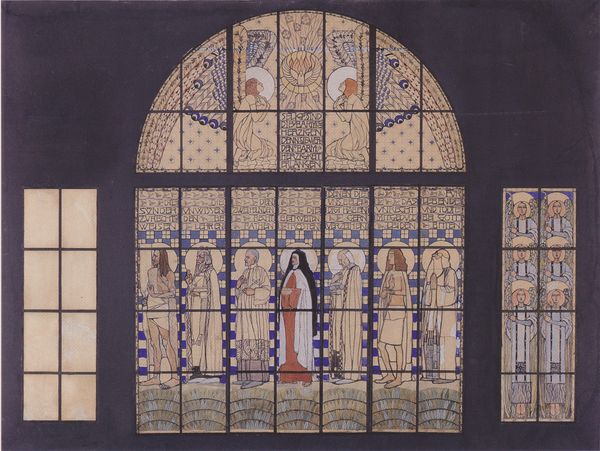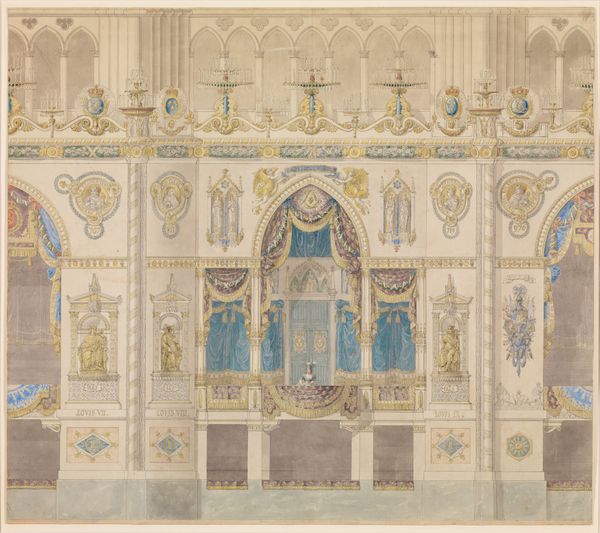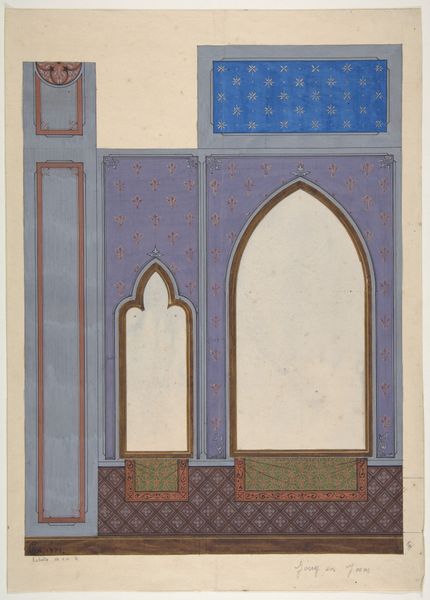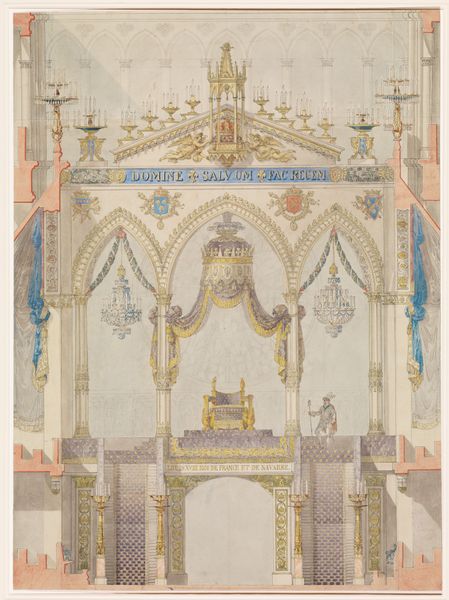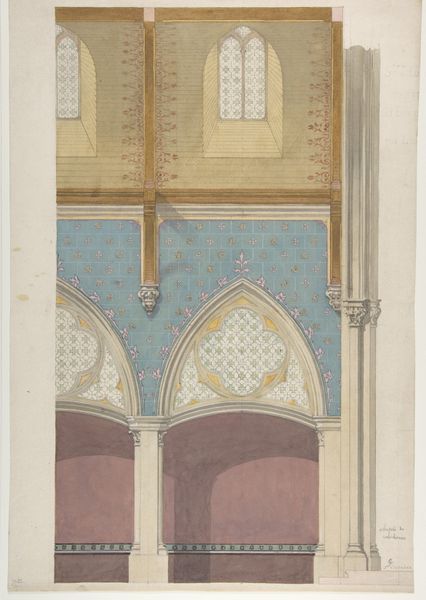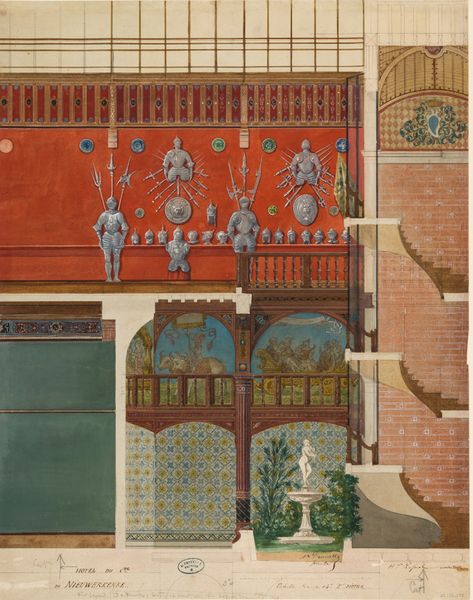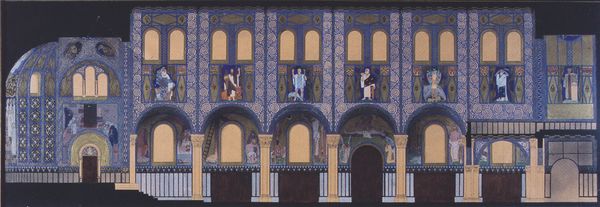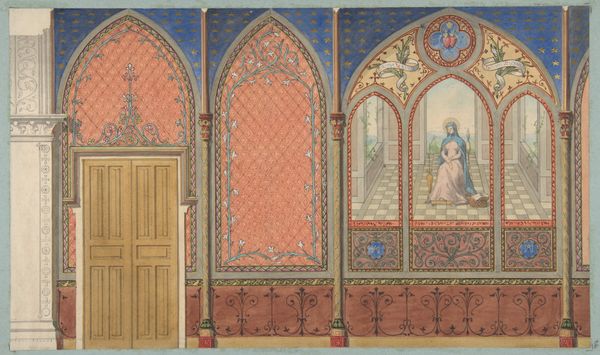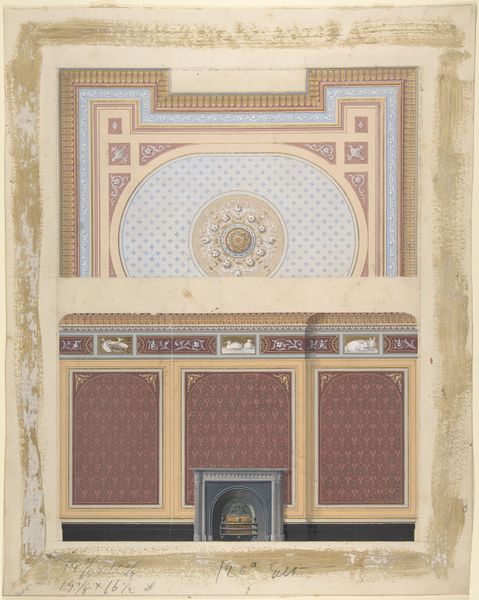
mixed-media, tempera, painting, mural, architecture
#
mixed-media
#
art-nouveau
#
tempera
#
painting
#
holy-places
#
historic architecture
#
traditional architecture
#
symbolism
#
architectural
#
history-painting
#
mural
#
architecture
#
historical building
Dimensions: 77 x 143.5 cm
Copyright: Public domain
Editor: Here we have Koloman Moser’s “Holy Spirit Church in Düsseldorf, design for the choir wall,” from 1907. It’s done in mixed media including tempera and it looks like a mural design. The palette is very restrained; primarily blues and golds, but despite that, it still strikes me as incredibly ornate. What do you see in this piece? Curator: I see a meticulous rendering that reflects the social and economic forces that shaped both Art Nouveau and religious commissions at the time. The materials themselves speak volumes: tempera, mixed media, likely chosen for both cost-effectiveness and the luminosity they could achieve. The ornamentation isn't merely decorative; it signifies wealth, status, and the Church’s power structure. Editor: So, you’re saying the choice of materials isn't just aesthetic, it’s also a reflection of social factors? Curator: Precisely! The turn of the century saw growing tensions between industrial production and traditional crafts. Artists like Moser grappled with this dichotomy. Notice how the design integrates repeated patterns, suggesting a move toward industrialized production methods, even within a sacred space. Were these patterns perhaps intended to be stencilled onto the wall by hired, less-skilled labour? Editor: That’s a very different lens than I was expecting. I was focused on the symbolism, but you’re highlighting the means of production, and implications about craft versus industrial manufacturing and the social structure of labour… I hadn’t thought about it that way before! Curator: Consider the church as a site of consumption. The congregation consumes not only the religious experience, but also the visual spectacle created through the labor and materials employed in the design. How does this interplay influence our understanding of faith and its place in society? Editor: So, analyzing it from a materialist perspective reveals more about the society at the time than just the surface religious iconography. Interesting. Curator: Exactly! By focusing on the 'how' and 'why' of its making, we unveil the cultural, economic, and political dimensions embedded within even seemingly spiritual artworks.
Comments
No comments
Be the first to comment and join the conversation on the ultimate creative platform.
